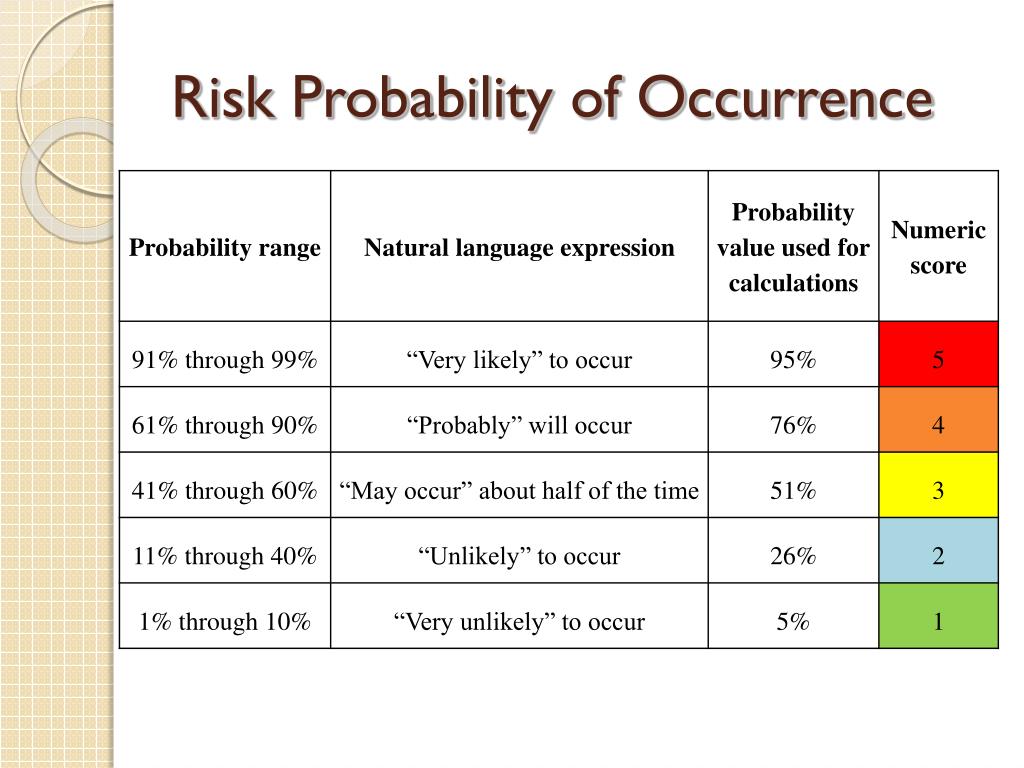

- #Risk probability impact response how to
- #Risk probability impact response free
Groupthink: When we get sucked into a group’s decision and don’t bring up objections (even if they’re valid). Survivorship bias: When we give too much value to the stories of success and ignore all the ones of failure. Confirmation bias: When we value information that aligns with our current position and de-value anything that contradicts it. you only think about the risks you faced on a previous project and not other ones). Anchoring: When we give too much value to readily available information instead of thinking about less-likely outcomes. More specifically, when imagining the outcomes of a project, it’s easy to fall victim to: You can blame cognitive biases (mental shortcuts that influence our thinking) for this problem. In other words, we think we have more control over uncertainties than we actually do. A reliable risk management plan shouldn't.įor one thing, studies have found that we overestimate our ability to influence events that are heavily determined by chance. It's easy to fall victim to cognitive biases. The point of creating a risk management plan is to identify those moments and create a system to maximize the positive impacts (and mitigate any potential negative ones!)īut this is easier said than done. Risks can be uncertainties in scope, schedule, cost, or quality. You don’t know for sure what will happen, and the potential outcomes can be positive or negative. A risk is simply a moment of uncertainty. But it misses a few nuances that explain just why risk management is so important to project managers.įirst off, it’s important to remember that risks aren’t all bad. In the most basic terms possible, a risk management plan is a document used by project managers to identify potential risks to the project, estimate the impact and the probability of them happening, and then define responses. The basics: What is risk management, anyway? Read our other documentation guides and plans: #Risk probability impact response free
In this post, we’re going to dig into the specifics of creating a project risk plan and then provide you with a free project risk management plan template you can use on your own projects today. It’s like a roadmap that shows you every pothole and accident-prone corner on your path so you can avoid, re-route, or, at the bare minimum, be ready for whatever’s coming your way. Planning for failure is actually planning to succeedĪ project risk management plan is a document that helps you identify, evaluate, and plan for potential issues that could come up during your project.
#Risk probability impact response how to
How to create a powerful risk management system using Planio wikis and tasks. Continue to monitor and report on each risk Measure your risk threshold and work with project stakeholders Create a contingency plan in case things go really wrong Come up with preventative strategies for each risk Assign roles and responsibilities to each risk Evaluate and assess the consequence, impact, and probability of each potential risk Risk analysis: Identify potential risks (and then document and prioritize them) 
The 7 steps to creating a proper project risk management plan.For each risk, there are 3 levels of knowability to consider.What sort of risks do you need to think about?.
 The basics: What is risk management, anyway?. In fact, nearly ⅓ of all project failures are due to undefined risks! But ignoring potential risks isn’t just being overly optimistically. We’d all like to think that our project will go smoothly.
The basics: What is risk management, anyway?. In fact, nearly ⅓ of all project failures are due to undefined risks! But ignoring potential risks isn’t just being overly optimistically. We’d all like to think that our project will go smoothly.







 0 kommentar(er)
0 kommentar(er)
